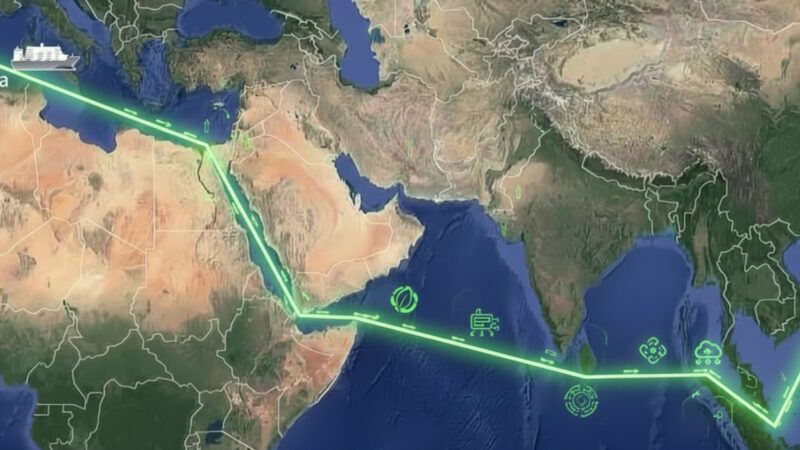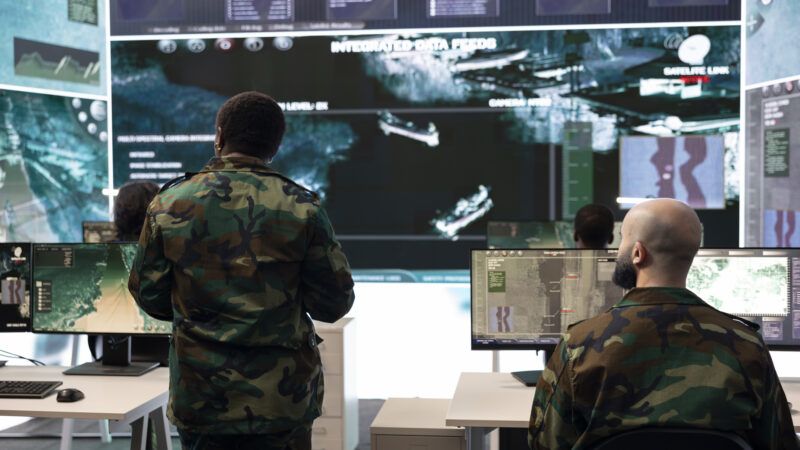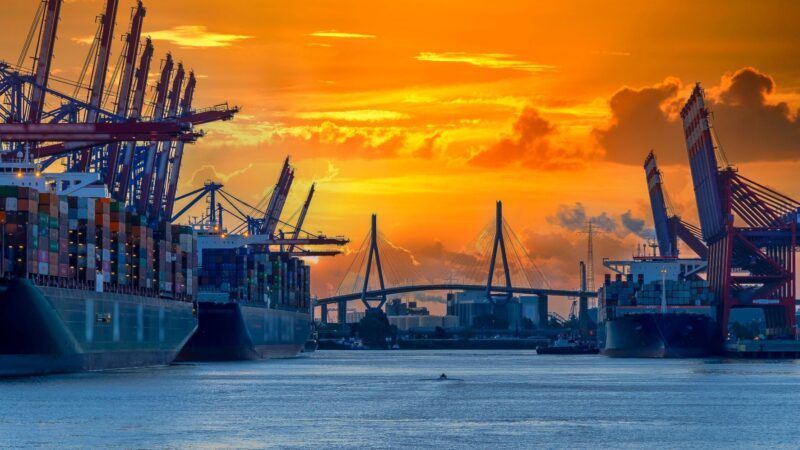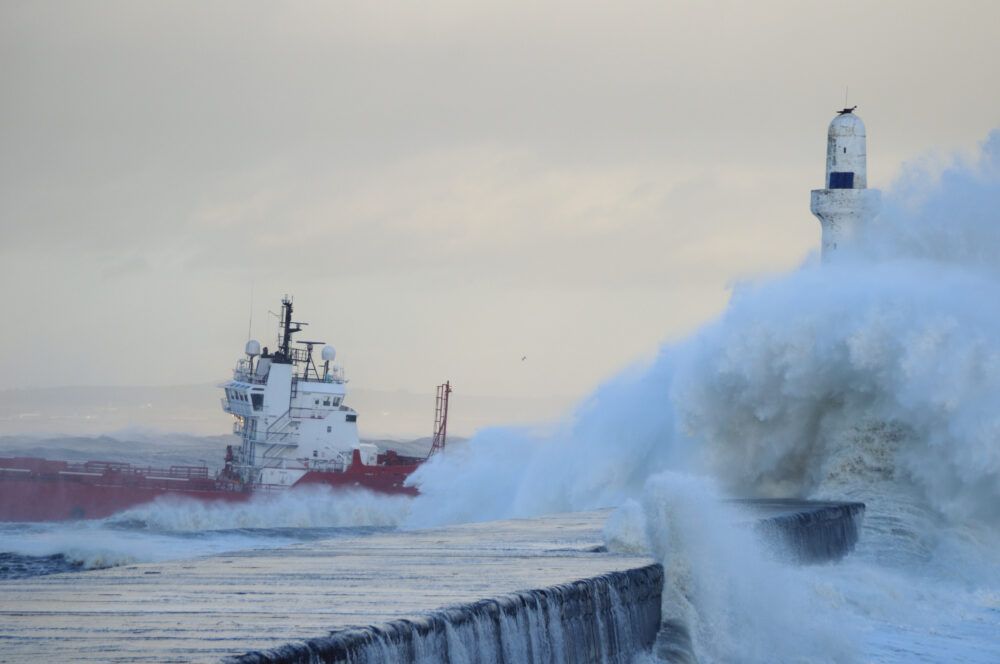 Increased exposure to coastal flooding will test the integrity of port infrastructure and operations. (Getty Images)
Increased exposure to coastal flooding will test the integrity of port infrastructure and operations. (Getty Images)
From the Ever Given to sea level rise: can climate change block international maritime traffic?
The blockade of the Suez Canal in May 2021 showed the vulnerability of supply chains and the world's dependence on international maritime traffic. In a matter of a few days, world trade experienced huge delays and millions in losses. The consequences of climate change – such as rising sea levels or the increase of extreme weather events – can lead to similar situations with increasing frequency and intensity.
 Increased exposure to coastal flooding will test the integrity of port infrastructure and operations. (Getty Images)
Increased exposure to coastal flooding will test the integrity of port infrastructure and operations. (Getty Images)
Domino effect
In September 2018, Typhoon Mangkhut swept through southern China, forcing the ports of Shenzhen and Hong Kong to shut down completely for more than three days. In 2020, the COVID-19 pandemic paralyzed part of the international maritime movement and, in May 2021, the ship Ever Given ran aground in the Suez Canal, blocking it for six days.
The consequences of each of these cases, as well as their contexts, were very different. But they all have one thing in common: they hit the global supply chain squarely and caused huge economic losses.
“Only on the first day of the blockade of the Suez Canal, it is estimated that the losses were 9.6 billion dollars. The value of delayed goods per hour was estimated at 400 million while Egypt lost around 14 million daily. There was a break in global supply chains, shortages, delays, cost overruns, price increases and, later, million-dollar claims,” explains Marta Serrano Pérez, PhD in Environmental Engineering and director of the Degree in Transport and Logistics at Camilo José University. Cela.
“Approximately 80% of the total merchandise transported worldwide is done by sea. And, according to data from the Suez Canal Authority, more than 12% of global trade transits through it. With these figures we can get an idea of the economic repercussions of blocking the channel,” she adds.
Along with million-dollar economic consequences, the blockade of the Suez Canal left a lesson that adds to that of other previous events: the world economy can be paralyzed by the closure of a single shipping route or the loss of maritime infrastructure. This is important lesson in a world that is facing, in the short and medium term, the consequences of climate change.
The impact of climate change on maritime infrastructure
Due to their location, in coastal areas and at low altitude, ports and other maritime infrastructures are very vulnerable to some of the consequences of climate change, such as the rise in sea level or the increase in the frequency and intensity of storms, winds and floods.
“These and other phenomena are directly responsible for serious interruptions in maritime communications. These interruptions, in turn, make it necessary to slow down or suspend port operations, increasing costs and delays and strongly stressing supply chains, as has already happened due to COVID-19 or the Ever Given event,” Serrano explains.
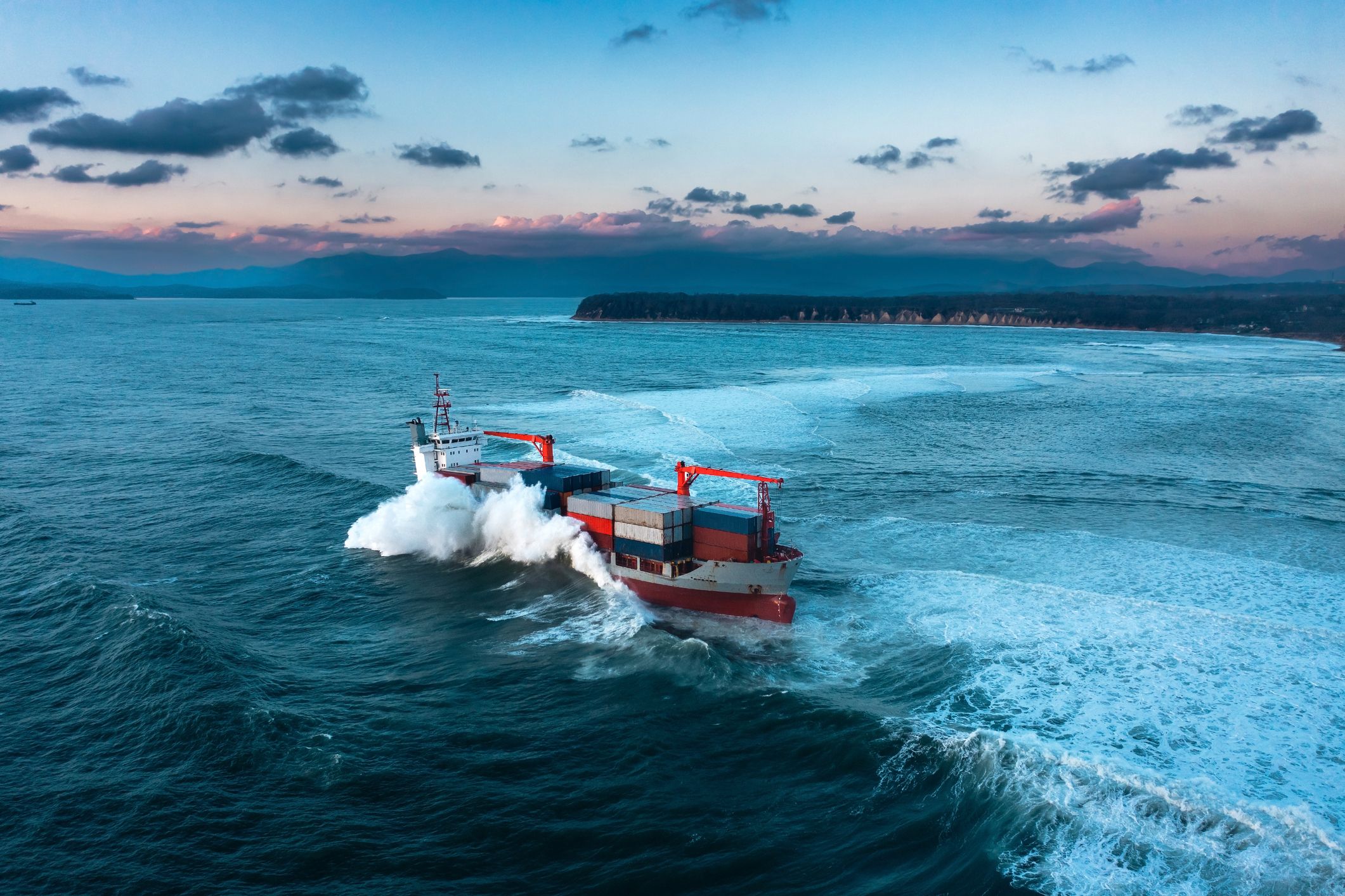
The report ‘High seas: Enabling a climate resilient Suez Canal’, prepared by Marsh, highlights the possible consequences of the rise in sea level on this Mediterranean infrastructure. Egypt's coastline is highly vulnerable to sea level rise and flooding. In addition, the progressive increase in drought and desertification can lead to an increase in sand and dust storms, which would make navigation difficult – in fact, the presence of strong winds was one of the causes of the Ever Given accident.
“Increased exposure to coastal flooding will test the integrity of port infrastructure and operations, due to potential disruption to loading, unloading, and movement of goods. Transportation and communication networks, industrial areas, housing, and sanitation systems may also be affected. If these were to happen, additional investments would have to be made to ensure that the channel's operations were not interrupted," there report explains.
Ports are infrastructures that, due to their location and characteristics, are especially exposed to climate change
Ports and climate change
Ports are other infrastructures that, due to their location and characteristics, are especially exposed to climate change. As Alexander Eslava Sarmiento, a port consultant and specialist in International Logistics, explains, around a third of the world's ports are located in areas prone to tropical storms and, between 1960 and 2010, at least one tropical storm passed within a radius of 50 km from 32% of the world's seaports.
In his work 'Global climate change and its impact on the world's seaports', he details the risks that climate change can imply for infrastructures and the side effects that can cause in their activity.
Among the first are the degradation of materials, foundations, and structures due to changes in groundwater, increased temperatures, or the intensity of rains and winds. Heat waves, on the other hand, may require the use of more energy to cool cargo stored in ports.
Among the side effects, Eslava highlights the following:
- Limitations in the maneuverability and docking of vessels and in loading and unloading operations, due to strong winds.
- Difficulty for port personnel to work outdoors on high temperatures days.
- Reduced visibility due to rainfall (in the event of a storm, for example), which can cause delays in berthing and cargo handling operations.
- Limitations on approach maneuvers due to the height of the waves.
- Limitations on port operations due to flooding.
"Since seaports do not function in isolation, but rather as part of complex transportation, logistics and supply chain systems, any weather-related disruption to them has broader implications for the resilience of the global economy," Eslava mentions.
Climate change on global routes
Many of the consequences of climate change, such as melting sea ice, altered wind patterns, and increased frequency and intensity of storms, can have significant consequences for shipping. One of the most visible is the melting of the Arctic, which will make it possible to trace new routes to the north of the globe.
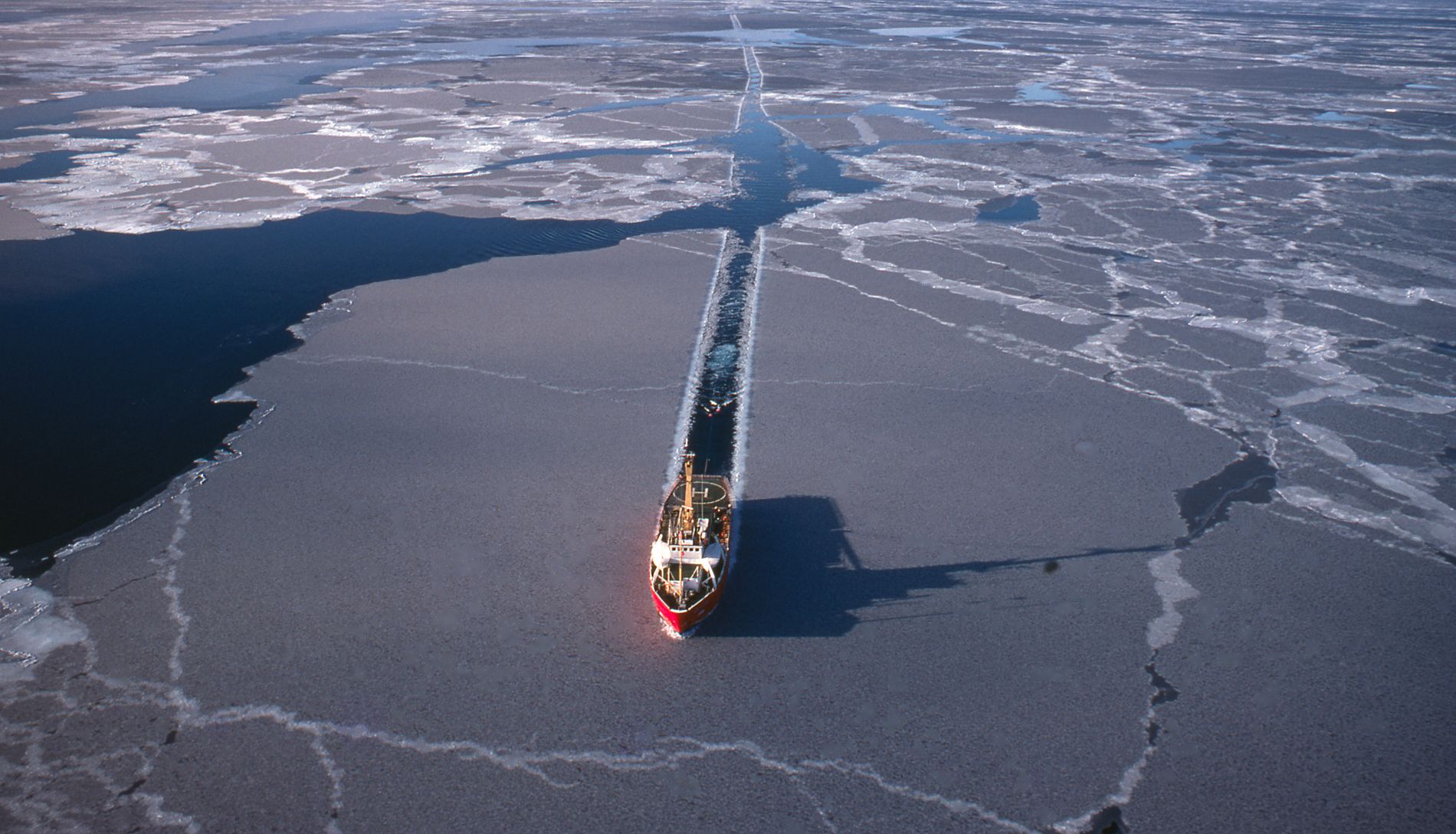
“Polar shipping routes through the Arctic will save a lot of kilometres, fuel and time. However, the environmental damage to its ecosystem and therefore of the planet could be irreparable,” adds Serrano.
Along with the opening of new routes, comes the possibility that many others may no longer be safe or profitable, due to changes in weather conditions and the inability to use infrastructure that is crucial today.
The Mediterranean, one of the most affected areas
The Mediterranean is another region where climate change is hitting hard. As the WWF points out in their report ‘The Climate Change Effect in the Mediterran - Six stories from an overheating sea’, this area of the planet has warmed 20% faster than the world average. In fact, it has already reached a rise of 1.5ºC since pre-industrial times.
The increase in temperatures, together with other problems such as overexploitation or the presence of invasive species, causes important changes in the ecosystems that end up having consequences at the socioeconomic level. Among them are the rise in sea level (which can impact coastal infrastructure) and the loss of species.
In the Mediterranean, these consequences have their greatest exponent in Posidonia oceanica. A marine plant that has great ecosystem value that stores blue carbon, serves as a habitat for many species and protects the coastline from erosion, among other benefits. Losing their populations has a direct impact on the ecosystems and, consequently, on the infrastructures that surround them and on maritime activity in the Mediterranean.
The solutions: adaptation and mitigation
Marsh's report proposes three ways to prevent climate change from disabling the Suez Canal: create resilience methods to physical climate risks (for example, adapting port infrastructure), create mechanisms to finance it, and ensure that all of the above are part of a strategy with a coherent and structured approach.
Serrano, on the other hand, highlights two concepts that are always protagonists in plans that deal with climate change: adaptation and mitigation. “In my opinion, it is necessary to develop two parallel lines of work. On the one hand, it is important that all stakeholders increase their efforts to reduce or even eliminate polluting emissions, which are responsible for global warming. On the other, coastal territories and port areas adapt to this new scenario as a consequence of climate change, with a large investment in technology and infrastructure.”

According to the professor at the Camilo José Cela University, the consequences that are already being felt and the warnings of what is to come have made shipping companies and port authorities more aware of the matter. Many ports have launched initiatives to reduce their emissions and make their infrastructures more resilient.
“Ports like San Diego or Rotterdam are leading initiatives that will allow them to adapt or mitigate the effects caused by climate change on their infrastructures,” she points out. “The Rotterdam Port Authority, for example, combines large-scale engineering projects, such as the Maeslant barrier or the construction of elevated port areas, with awareness programs for port companies on the threats posed by climate change and climate management risk.”
“Additionally and in parallel, they are developing energy transition and circular economy projects to reduce the environmental footprint of the port. This will allow them to anticipate the rise in sea level and have this phenomenon planned for their future development. Consequently, the port will be in a position to invest responsibly in order to remain safe from floods,” explains Serrano.
In the Port of Barcelona, different initiatives promote the use of clean and renewable energy to reduce greenhouse gas emissions and self-consumption. The REST-COAST project, on the other hand, seeks to restore coastal ecosystems based on nature, to reduce the risks of erosion and flooding brought by climate change. And the list does not end there.
These are mitigation and adaptation measures that can considerably reduce the impact global warming may have on the maritime sector in the coming years. And thus prevent climate change footprint problems such as the one generated by the Ever Green.



